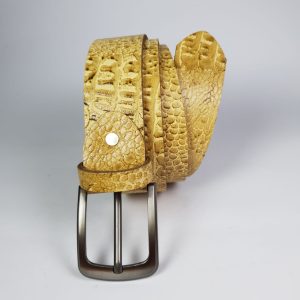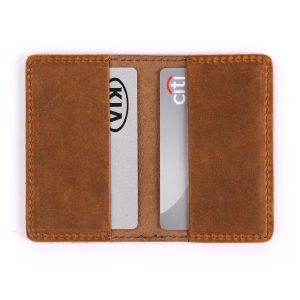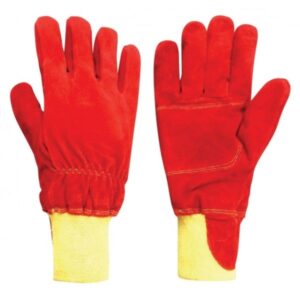Fire Fighting Gloves
Firefighters use different types of hand protection for different missions. For example, work gloves provide puncture protection during maintenance tasks, but they are not appropriate for firefighting. Extrication and rescue gloves provide protection from cuts, punctures, bodily fluids, and chemicals while still allowing the dexterity to operate rescue tools during vehicle extractions. Proximity gloves have a metallic outer layer for use in the extreme heat environments of aircraft and some chemical fires. Structural gloves with resistance to flame, conductive heat, liquid penetration, cuts, and punctures are designed for use in fighting fires in residential and commercial structures.
Structural firefighting gloves consist of an outer shell, a moisture barrier, and a thermal barrier, which may be configured as joined or continuous layers.
Materials Used in Structural Firefighting Gloves
In Fire-Protections glove models, the outer shell is made of leather. Leathers provide friction grip and puncture resistance and can be specially processed for flame resistance during tanning. Full-grain cowhide, elk, and goatskin are commonly used which can be made thinner. Some products use leathers impregnated with silicone to improve water repellence and durability. Other products use synthetic fiber materials, such as Kevlar-TM or Nomex-TM, instead of leather for their high strength to weight properties. These materials combined with additional reinforcements added to the outside palm or back of the hand, or to internal layers. Some gloves combine several materials.
The moisture barrier prevents the penetration of liquids such as water, blood, and some chemicals. Polytetrafluoroethylene (PTFE, e.g. Teflon-TM) is commonly used because it repels water and is heat resistant. In some products, the moisture and thermal barriers are combined into one material. In others, the thermal barrier is an inner lining that insulates the hand from heat and provides a layer of comfort. A synthetic polymer knit material known as mod-acrylic is often used for the glove thermal lining because it is flame resistant and a good insulator. Kevlar and Nomex may also be used for the thermal barrier. All threads used in the glove construction must be inherently flame-resistant fiber, and any metal hardware must be resistant to corrosion.
On this page, we have an appropriate range that suits your needs for fire-fighting work solutions
Categories
- Belt (3)
- Card Holder (5)
- Cotton / String-knit / Synthetic Garden Gloves (6)
- Cotton & String-knit Work Gloves (9)
- Cow-hide Split Leather Welder Jackets, Aprons, Sleeves (6)
- Cow-Hide Split Welding Gloves (14)
- Dyneema Palm Coated Gloves (7)
- Fire Fighting Gloves (4)
- Goat-grain / Cowhide Dressing Gloves (4)
- GOAT-GRAIN / COWHIDE TIG/MIG-WELDER Gloves (13)
- Goatskin ASSEMBLY Gloves (14)
- Goatskin Lineman / Voltage protection Electric Cover Gloves (7)
- Hi- Visibility Driver Gloves (5)
- Impact Gloves (6)
- Laptop Bag (6)
- Leather Driver Gloves (9)
- Mechanics Gloves (13)
- Oil block Goatskin Kevlar®-Lined Impact-Resistant Driver Gloves (13)
- Premium Quality Cow Split Leather Rigger Gloves (17)
- Premium Quality GOAT-GRAIN / COWHIDE Leather Rigger Gloves. (9)
- Sports Gloves (38)
- wallet (9)







